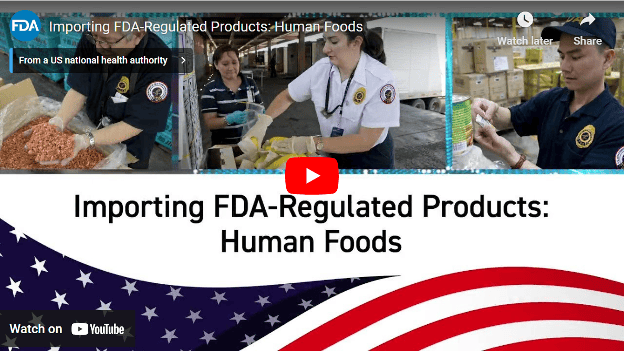
SCROLL
DOWN
On October 19, 2023, the first Deputy Commissioner for Human Foods at the U.S. Food and Drug Administration (FDA) James (Jim) Jones, who assumed the role in September 2023, released a written statement revealing his priorities for forging a new, unified Human Foods Program (HFP) within the agency. The same day as the written statement was released, Jones held an invite-only media roundtable to elaborate on his written statement. Food Safety Magazine Editorial Director Adrienne Blume was among the editors and journalists in attendance at the roundtable.
Jones revealed his intent to uphold and execute the HFP and Office of Regulatory Affairs (ORA) framework set forth by FDA Commissioner Robert M. Califf, M.D. in January 2023, which was informed by an independent evaluation of the agency's human foods activities conducted by the Reagan-Udall Foundation throughout 2022. Prior to his appointment as Deputy Commissioner, Jones served on the Independent Expert Panel that conducted the operational evaluation of FDA for the Reagan-Udall Foundation.
Deputy Commissioner Jones outlined three priority areas for FDA's new HFP: preventing foodborne illness, decreasing diet-related chronic disease through improved nutrition, and safeguarding the food supply through the responsible use of chemicals and dietary supplements.
Preventing Foodborne Illness
Jones first highlighted his commitment to expanding FDA's collaboration with federal partners; state, local, tribal, and territorial (SLTT) regulatory entities; agriculture departments; and international regulatory counterparts to mitigate the risk of food contamination. He stated that FDA will apply knowledge gained from previous foodborne illness outbreaks as the agency works with stakeholders to ensure safety of the U.S. food supply. For example, Jones will make routine visits to FDA's partners in the field to enhance and improve stakeholder engagement, and to better understand the production of foods regulated by the agency. He also hopes to develop new partnerships that help achieve the goals of the HFP.
Additionally, Deputy Commissioner Jones is proposing the establishment of an Office of Critical Foods (OCF) as part of the unified HFP to manage the regulation of infant formula and medical foods. FDA will continue its efforts to incentivize redundancy and resiliency of the infant formula supply chain infrastructure over the long term, and will work with manufacturers to help them take the required steps to manufacture product safely and avoid recalls and plant shutdowns. Under Jones' charge, the HFP will also strive to prevent foodborne illnesses by meeting the mandates of the Food Safety Modernization Act (FSMA), and by leveraging scientific and technological advances in alignment with the agency's New Era of Smarter Food Safety blueprint.
Safeguarding the Food Supply Through the Safe Use of Chemicals and Dietary Supplements
FDA also aims to keep food safety its first priority, especially for vulnerable populations like children, while supporting innovation in food ingredients and food packaging, advances in safety testing and assessment methodologies, and new information sources on food composition and consumption. As a former U.S. Environmental Protection Agency (EPA) pesticide and chemical regulator, Jones brings a wealth of experience and background in chemical safety, which he hopes to leverage to advance the prevention and reduction of people's exposure to contaminants and other harmful chemicals through foods.
As an example of this work, FDA is designing a proposed rule to amend its regulations to remove the authorization of BVO as a food ingredient in light of a recently published study that raises potential safety concerns. FDA will also continue its efforts to reduce babies' and young children's oral exposure to environmental contaminants through the Closer to Zero initiative. Deputy Commissioner Jones will lead the teams comprising the HFP's Office of Food Chemical Safety, Dietary Supplements, and Innovation. He hopes to employ the scientific expertise that applies to safety evaluations of both foods and dietary supplements and to facilitate the safe use of innovative ingredients.
Decreasing Diet-Related Chronic Disease Through Improved Nutrition
Finally, Jones intends to with his team to utilize tools at the agency's disposal to help the U.S. live healthier lifestyles through improved nutrition. One of the HFP's goals is to ensure that people across the country have greater access to healthier foods and nutrition information. FDA's nutrition priorities include reducing sodium across the food supply, updating and making labels more accessible to help consumers make healthy choices, promoting healthy habits early, and supporting innovation.
To elevate and strengthen the agency's nutrition portfolio, the proposed HFP includes creating a Nutrition Center of Excellence, which will enable FDA to strategically focus on nutrition policies and initiatives. An example of ongoing work the agency is conducting in the area of nutrition is research to explore the development of a standardized, science-based, front-of-package labeling scheme to help consumers—especially those with less complete knowledge of nutrition—quickly and easily identify foods that are part of a healthy eating pattern.
In the October 19 invite-only media roundtable with Deputy Commissioner Jones and FDA staff, Jones elaborated on the written statement he issued that day. He discussed his role amid the "significant reorganization at FDA" and emphasized that his position would focus on preventing foodborne illness. He also said that FDA had taken a considerable portion of the Reagan-Udall report's recommended advice.
Amid its reorganization, FDA is focused on minimizing duplication of efforts and strengthening its relationships and interactions with stakeholders. "Our stakeholders are important for FDA to succeed," Deputy Commissioner Jones said, explaining that FDA will work more closely with them to understand how they operate, learn about their restrictions and management, and learn from them to facilitate the crafting of FDA guidance and regulation. FDA is also focused on expanding its collaborations with state partners. On the nutrition side, FDA will be focusing its efforts on nutrition improvement for the betterment of public health, as well as food product labeling efforts to help consumers make fast, healthy decisions. "We want to show our work, so that the public can see it and give their feedback," Deputy Commissioner Jones said.
Food Safety Magazine thanks FDA and Deputy Commissioner Jones for the opportunity to join the October 19 roundtable and hear more about his commitment to fulfilling the vision of the Agency's proposed Human Foods Program. For additional coverage of the roundtable, see our full report here. Jones will share further details about the actions he will be taking as Deputy Commissioner for Human Foods to realize FDA's vision for the HFP transformation in the coming months.
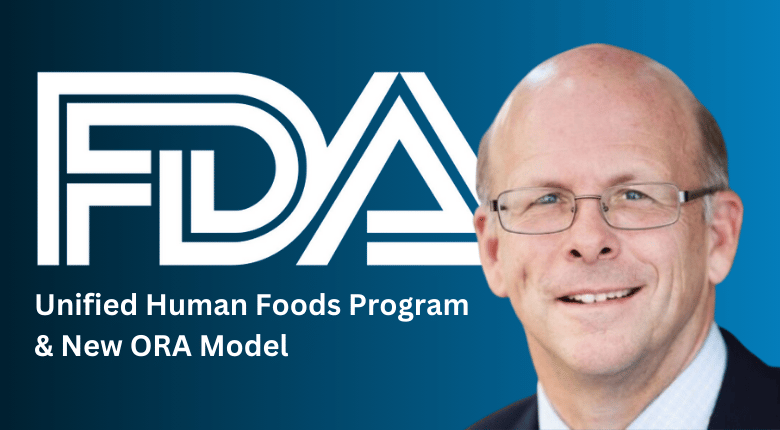
FDA Deputy Commissioner Jones Discusses Future of Human Foods Program
California Food Safety Act Signed Into Law, Banning Four Additives by 2027
Image credit: Dr_Microbe/iStock / Getty Images Plus via Getty Images

The California Food Safety Act—statewide legislation that bans the sale of foods containing four possibly toxic chemical additives—was signed into California law by Governor Gavin Newsom on October 7, 2023. The legislation prohibits the sale of food containing red dye 3, potassium bromate, brominated vegetable oil, and propylparaben. California Assemblyman Jesse Gabriel, the original author of AB 418, and Governor Newsom cited the EU's ban of the four chemicals in their reasoning for introducing and signing the bill into law, respectively. Studies have suggested the additives may be linked to serious health harms, such as cancer, reproductive issues, and childhood behavioral and developmental problems.
The law, which goes into effect on January 1, 2027, will require food manufacturers using any of the targeted chemicals to reformulate their products if they wish to continue to sell their foods in the significant California market. Violation of the California Food Safety Act will be punishable by a civil penalty not to exceed $5,000 for a first violation and not to exceed $10,000 for each subsequent violation.
AB 418 originally also aimed to ban a fifth chemical, titanium dioxide, but it was removed from the legislation before reaching Governor Newsom's desk to gain more support, and due to FDA's stance that it is safe as a regulated color additive in foods. Similar legislation is now pending in the state of New York, targeting the same chemicals as AB 418, including titanium dioxide.
Since sesame became the ninth major food allergen under the Food Allergy Safety, Treatment, Education, and Research (FASTER) Act, some food manufacturers have attempted to circumvent the requirements for preventing allergen cross-contamination by intentionally adding sesame to their products and declaring its presence on their labels. To address this trend, FDA has updated its Guidance for Industry: Hazard Analysis and Risk-Based Preventive Controls for Human Food to include a new chapter on food allergens that helps food facilities avoid allergen cross-contact and ensure proper labeling.
The FASTER Act, which became effective on January 1, 2023, requires sesame, when present in food, to be disclosed on food labels. Businesses are expected to implement controls to significantly minimize or prevent sesame allergen cross-contact. Although the FASTER Act was intended to make food safer for those who experience an allergic reaction to sesame, some manufacturers are intentionally adding sesame to products that previously did not contain sesame and are labeling the products to indicate its presence, rather than take appropriate measures to minimize or prevent cross-contact. Although this behavior keeps manufacturers in compliance with the law for disclosing the presence of a major food allergen, FDA has denounced the practice as it limits options for consumers who are allergic to sesame.
FDA is encouraging industry to follow the newly updated draft guidance on ways to significantly minimize or prevent allergen cross-contact and undeclared allergens rather than intentionally adding sesame to their products to comply with the law.
The updated draft guidance includes a new chapter, titled, "Chapter 11—Food Allergen Program," which explains how to establish and implement a food allergen program that ensures food is protected from major food allergen cross-contact and that the finished product is properly labeled with respect to the major food allergens. The chapter provides many examples of ways to significantly minimize or prevent allergen cross-contact and undeclared allergens using current good manufacturing practices and preventive controls. As labeling errors are the cause of most FDA food allergen recalls, Chapter 11 also includes guidance on how to monitor or verify that food allergens are properly declared and the correct label is used for products.
Chapter 11 also discusses circumstances in which, despite adherence to appropriate CGMPs and preventive controls, allergen presence due to cross-contact cannot be completely avoided. The available options to a firm in these cases are discussed, such as the voluntary use of allergen advisory statements. The chapter complements FDA's recently released Draft Compliance Policy Guide on Major Food Allergen Labeling and Cross-Contact, which reflects the agency's approach for the evaluation of potential allergen violations.
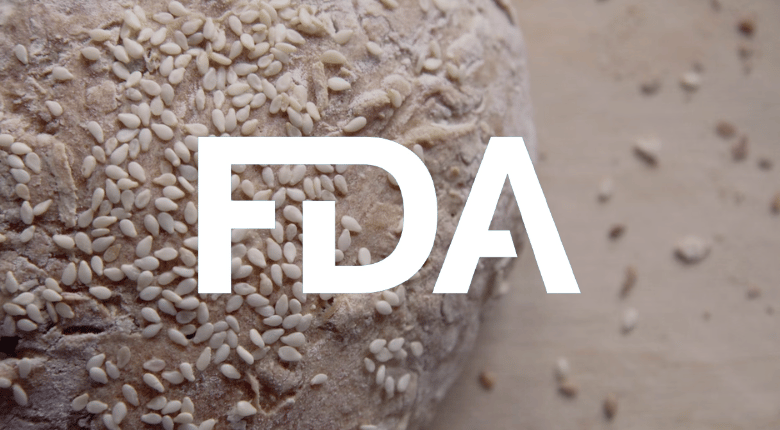
FDA Updates Guidance to Address Cross-Contact Requirements for Sesame
FDA Releases New Food Fraud Webpage
The U.S. Food and Drug Administration (FDA) has released a new website on economically motivated adulteration (EMA), including food fraud. The purpose of the website is to keep businesses and consumers informed on the latest food fraud developments.
The website includes links on how to report food fraud; examples of food adulteration; how food fraud is detected and monitored; enforcement and legal consequences, such as recalls, seizures, and import refusals; guidance documents to assist manufacturers and importers; and a list of import alerts.
EMA occurs when "someone intentionally leaves out, takes out, or substitutes a valuable ingredient or part of a food," according to FDA. EMA also occurs when a substance is added to a food to make it appear better or of greater value.
Food fraud is a common type of EMA that FDA investigates, but EMA also occurs with other products, including animal food and cosmetics. Some types of EMA are also misbranding violations. Estimating how frequently food fraud occurs or its exact economic impact can be challenging because food fraud is designed to avoid detection. Outside estimates by experts have found that food fraud affects 1 percent of the global food industry at a cost of approximately $10–$15 billion per year, although more recent expert estimates peg the cost as high as $40 billion per year.
Food fraud can also lead to major health issues and even death. Some examples include lead poisoning from adulterated spices and allergic reactions to a hidden or substituted ingredient that contains a small amount of just one food allergen.
Click here to visit FDA’s new EMA website.
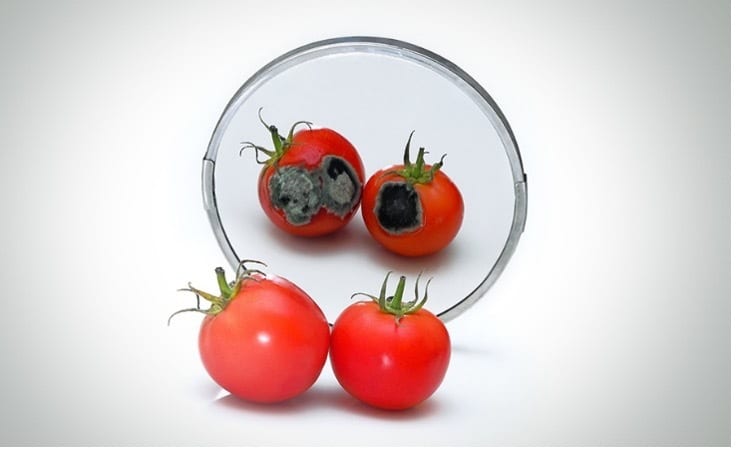
Image credit: Dr_Microbe/iStock / Getty Images Plus via Getty Images
The U.S. Department of Agriculture's Food Safety and Inspection Service (USDA's FSIS) has published its annual plan for fiscal year (FY) 2024, which acts as a guide for the agency's mission to prevent foodborne illnesses associated with meat, poultry, and egg products. The FY 2024 Annual Plan is the second annual plan released under the FSIS 2023–2026 Strategic Plan.
The plan highlights the activities FSIS intends to carry out in 2024 and provides a detailed framework for FSIS to follow as it strives to fulfill its three strategic goals:
- Prevent foodborne illness and protect public health
- Transform inspection systems, policies, and scientific approaches
- Achieve operational excellence.
Strategic Goal 1—Prevent Foodborne Illness And Protect Public Health
FSIS will continue to prioritize its goal of reducing human cases of salmonellosis attributable to contaminated poultry products. The agency will work on rulemaking for its proposed regulatory framework for Salmonella, which was introduced in October 2022 and suggests implementing an enforceable final product standard by declaring the pathogen as an adulterant in poultry products. FSIS will also proceed with finalizing its plan for its proposed determination to declare Salmonella an adulterant in breaded stuffed raw chicken products, which builds upon its proposed regulatory framework for the pathogen.
Other objectives and desired outcomes of Strategic Goal 1 include preventing adulteration and misbranding and reducing foodborne illnesses from FSIS regulated products by strengthening compliance with food safety statutes and regulations, achieving pathogen reduction, assuring labeling is truthful and not misleading, strengthening food safety practices throughout the supply chain, enhancing collaborative response to foodborne illness outbreaks and other food safety incidents, and raising consumer awareness of food safety.
There are also several partnerships and collaborations related to Strategic Goal 1 that FSIS will continue to foster throughout FY 2024, including:
- Joint oversight of human food produced using animal cell culture technology between FSIS and FDA
- The PulseNet national laboratory network that connects foodborne illness cases to detect outbreaks, led by the U.S. Centers for Disease Control and Prevention (CDC)
- The Farm-to-Fork Food Safety Working Group, which aims to improve pre-harvest food safety through a One Health approach
- The Interagency Foodborne Outbreak Response Collaboration (IFORC), which strives to improve the coordination of FSIS's, CDC's, and FDA's foodborne outbreak responsibilities.
Strategic Goal 2—Transform Inspection Systems, Policies, and Scientific Approaches
FSIS will continue to leverage the most current science, data, and technology to inform its decision-making, innovate its laboratory methods, and evaluate the effectiveness of its approaches to verifying that regulated industry meets food safety requirements. The agency will also specifically strive to optimize the design of its sampling programs, already having announced its sampling program priorities and changes for FY 2024 weeks prior to the publication of the present annual plan.
Strategic Goal 2 Partnerships and Collaboration that FSIS will continue to prioritize during FY 2024 include:
- The National Advisory Committee on Meat and Poultry Inspection (NACMPI), which advises USDA's Secretary of Agriculture on state and federal programs with respect to meat and poultry inspection, food safety, and other matters related to the Federal Meat Inspection Act and Poultry Products Inspection Act
- The National Advisory Committee on Microbiological Criteria for Foods (NACMCF), which provides scientific advice and/or peer reviews to federal food safety agencies for use in the development of an integrated national food safety system approach that assures the safety of domestic, imported, and exported foods
- FSIS research collaborations, which are communicated through the FSIS Research Priorities webpage
- Participation in the International Association for Food Protection (IAFP).
Strategic Goal 3—Achieve Operational Excellence
FSIS will strive to expand recruitment and increase employee retention for mission-critical positions, enhance employee training and professional development, ensure the workplace is equitable, enhance efficacy and efficiency of key business processes, improve customer service, and transform business infrastructure and IT. These activities will ideally lead to an adaptable, high-performing, and engaged workforce, as well as optimized service delivery.
One of the agency's main priorities for Strategic Goal 3 is to improve its service for the more than 5,500 FSIS-regulated small and very small establishments. The agency will do this by hosting forums for communication, providing outreach, and publishing additional guidelines designed to assist these establishments in meeting regulatory requirements.

FSIS FY 2024 Strategic Plan Focuses on Salmonella, Inspections, Small Establishments
A recent Joint Food and Agriculture Organization of the United Nations (FAO)/World Health Organization (WHO) Expert Meeting on Microbiological Risk Assessment (JEMRA) reviewed scientific developments, data, and evidence to support ongoing work to update the Codex Alimentarius General Principles of Food Hygiene to the Control of Viruses in Foods (CXG-079-2012).
Specifically, the Codex Committee on Food Hygiene (CCFH) requested that JEMRA provide an up-to-date review of foodborne viruses and relevant food commodities of highest public health concern, a review of the analytical methods for relevant enteric viruses in food commodities, and a review of scientific evidence on the potential utility of viral indicators or other indicators of contamination. To meet these charges, JEMRA reviewed the scientific literature on foodborne viruses published since the last JEMRA report on viruses in foods in 2008.
Foodborne Viruses and Foods of Highest Health Concern
The frequency of illness and the clinical severity of disease, as well as virus-food commodity pairs, were ranked in the context of foodborne illness to determine the viruses and foods of highest public health concern. JEMRA identified human norovirus as the leading cause of viral foodborne illness, followed by hepatitis A and hepatitis E viruses. Hepatitis A and hepatitis E were ranked equally to one another, but were placed higher than norovirus in terms of clinical severity. When considering both frequency and severity, the ranking for the viruses with regards to public health concern fell into three groups, as follows:
- Norovirus
- Hepatitis A virus and hepatitis E virus, in descending order
- Rotavirus, sapovirus, enterovirus, astrovirus, and enteric adenovirus, in descending order.
JEMRA also considered commodities from a global perspective, and identified virus-commodity pairs with the highest global public health burden associated with specific viruses, as follows:
- For norovirus: Prepared food, followed by (equally ranked) frozen berries and shellfish
- For hepatitis A: Shellfish, frozen berries, and prepared foods (all of equal rank)
- For hepatitis E: Pork, followed by wild game.
JEMRA acknowledged the lack of sufficient data to conduct a ranking of foods that may be contaminated by astrovirus, sapovirus, enterovirus, enteric adenovirus, and rotavirus, and called for better monitoring and investigation of these foodborne illnesses and associated commodities. Additionally, the experts noted that ranking of virus commodity pairs on a global level is challenging, partially due to regional differences in foods attributed to human foodborne illness.
Although the lack of surveillance data, the potential for asymptomatic shedding, and sparse reporting of foodborne cases pose a major challenge to prevention and control strategies for foodborne viruses, based on the available data and literature, JEMRA concluded the following about norovirus, hepatitis A, and hepatitis E:
- Norovirus: Annually, norovirus is estimated to cause 125 million cases of foodborne illness and 35,000 deaths globally. Norovirus is highly infectious, and outbreaks have been linked to foods with low levels of contamination. Viral contamination can occur across the entire food chain. Severe outcomes, including hospitalization and death, mainly affect children less than five years of age, the elderly, and immunosuppressed individuals who may shed the virus for extended periods of time.
- Hepatitis A: Annually, hepatitis A is estimated to cause 14 million cases of foodborne illness and 28,000 deaths globally, and is a reportable disease in some countries. There are significant regional differences in the proportion of hepatitis A cases that are attributed to food due to endemic prevalence and vaccine utilization. International trade of foods plays an important role in transmission to susceptible populations. Wider compliance with international standards, such as good agricultural practices (GAPs) and good hygiene practices (GHPs), is likely to reduce global transmission.
- Hepatitis E: Unique among foodborne viruses in that it is a zoonotic pathogen with many asymptomatic animal reservoirs, notably swine, hepatitis E has no global estimation of cases attributed to food. However, countries that have investigated the virus more thoroughly have found that their prior estimates are too low by one order of magnitude or more. Genotypes 3 and 4 originating from infected animals are major sources for foodborne cases of hepatitis E, a trend that has been increasing in recent years in some countries. These genotypes cause acute hepatitis which can be severe in individuals with underlying health conditions. They cause chronic hepatitis leading to cirrhosis and liver damage in people with immunocompromised conditions, and are associated with a wide range of neurological aftereffects. Undercooked pig products, like liver or raw sausage containing liver or blood, as well as liver pâté, are the main foods contaminated by hepatitis E virus.
Analytical Methods and Indicators for Foodborne Viruses
Since the 2008 JEMRA report on viruses in foods, international and national standard methods have been developed and validated for detection and quantification of human norovirus and hepatitis A virus in foods. The methods have been implemented in various countries.
International Organization for Standardization (ISO) methods ISO-15216-1:2017 and ISO-15216-2:2019 are widely used for the detection of norovirus and hepatitis A virus in various commodities, and serve as a benchmark for the validation of new methods. Matrices included in the ISO methods are, for example, leafy greens, soft fruits, and shellfish. ISO methods for hepatitis E virus detection in meats and meat products are in development.
Aside from ISO methods, some national methods have been validated and in use by laboratories. Current standardized methods are based on detection of viral nucleic acid, which does not necessarily indicate infectivity. These methods can be limited by several factors (e.g., the complexity of food composition and low levels of contamination). The most notable challenges to current methods include ensuring accurate interpretation, application to other viruses and/or matrices, integration of sequencing technologies, and implementation in low resource countries. JEMRA called for the sharing of laboratory and epidemiological data nationally, regionally, and internationally to improve the understanding and control of foodborne viruses.
A variety of indicators for viral contamination have been investigated, including bacteria, bacteriophages, and plant and animal viruses. At present, these indicators have been studied mostly in environmental waters and shellfish, with variable utility. Additional research is required to determine if there is an appropriate viral indicator for use in other commodities associated with foodborne virus contamination.
Needs Assessment and Data Gaps
JEMRA underlined the need for infectivity assays for wild-type viruses that are relative to detection. Despite the existence of multiple experimental approaches, there is still no definitive means to differentiate infectious from noninfectious viruses using molecular amplification. Human norovirus and hepatitis E virus in vitro propagation models have been developed but are not yet suitable for routine use.
JEMRA recommends that member countries consider building their capacities to support training and adoption of methods for detecting viruses in foods and the environment. This approach has the potential to enhance knowledge on food attribution, support risk analysis, and reduce the burden of viral foodborne disease worldwide. Appropriate global actions will help alleviate the anticipated increase in public health risk from viral foodborne illness arising from population growth, the climate crisis, and globalization of food supply chains.
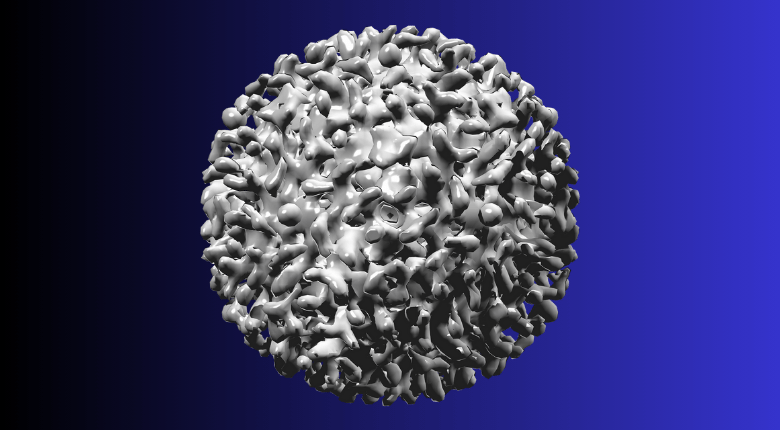
FAO/WHO Committee Conducts Review of Foodborne Viruses to Support Codex Updates
A recent systematic review funded by the European Food Safety Authority (EFSA) has raised concerns with the presence of unregulated harmful mycotoxins in foods, finding a total of 15 unregulated mycotoxins in 38 different combinations across 19 food categories worldwide.
Mycotoxins are toxic secondary metabolites produced by fungi that are capable of contaminating a wide range of food commodities after crops are infected with fungi-producing toxins in the field, or during storage, transportation, or food processing. Mycotoxins are associated with health harms like immunosuppression, carcinogenesis, endocrine-disrupting activity, gastrointestinal disorders, and kidney damage. In the EU, the European Commission has established different maximum limits for mycotoxin exposure in adults and children through Regulation 915/2023. However, despite the existence of hundreds of mycotoxins, only a few are regulated in foods based on their widespread occurrence and known toxicological effects.
At present, regulated mycotoxins in the EU include aflatoxins, deoxynivalenol, fumonisins, ochratoxin A, zearalenone, and patulin. The European Commission has also proposed recommended levels for T-2 and HT-2 toxins in cereals and cereal-based products, and for alternariol, alternariol methyl ether, and tenuazonic acid in commodities like cereal-based foods for infants, legumes, and tree nuts.
However, non-regulated mycotoxins, often referred to as emerging mycotoxins, are increasingly prevalent in food and feed due to environmental factors associated with climate change, such as drought and high temperatures. Additionally, the findings of many in vitro studies indicate that most interactions between co-occurring mycotoxins lead to additive or synergistic toxic effects.
For the study, the researchers conducted a systematic review of literature published from January 2018–December 2022 on recent occurrence data for the most frequently found non-regulated mycotoxins that have already undergone a preliminary assessment by EFSA. The review focused on foods with the highest dietary exposure at the European level, such as cereals and cereal-based foods, oilseeds, nuts, fruits, vegetables, wine, sauces, coffees, legumes, beans, and potatoes, which were grouped into 19 categories. The study is the first attempt to quantify the occurrence and co-occurrence of the 15 emerging mycotoxins worldwide.
Most of the studies focused on the occurrence of non-regulated mycotoxins in grains and grain-based products, legumes, and foods for infants and children. A total of 38 different mixtures of non-regulated mycotoxins were found, ranging from 2–12 mycotoxins. As the existing data show that most interactions between the 15 mycotoxins lead to additive or synergistic toxic effects, the researchers emphasize the need to gather more data related to the co-occurrence of regulated and non-regulated mycotoxins to facilitate and support multiple chemical risk assessment methodologies. The co-occurrence of the studied mycotoxins and group-based toxicity assessments should be taken into consideration for a proper risk assessment. Overall, quality data, continuous monitoring, scientific exchange, and support for continuous risk assessment is crucial for mitigating the potential risks to human health posed by emerging mycotoxins.

Researchers Stress Importance of Monitoring Emerging Unregulated Mycotoxins in Food
As part of its ongoing efforts to strengthen the safety, resiliency, and oversight of the infant formula industry, FDA has updated its infant formula compliance program for agency investigators, laboratory analysts, and compliance officers. The compliance program is designed to comprehensively outline the agency's approach to inspections, sample collection, sample analysis, and compliance activities.
FDA's newly updated compliance program builds on lessons learned over the last several years to elaborate on the agency's approaches for inspections, sampling, laboratory analysis, and imported infant formula products. For example, one update is the inclusion of instructions for annual environmental sampling of Cronobacter and Salmonella at powdered infant formula facilities. The compliance program also provides instruction for FDA notification should a sample test positive for Cronobacter or Salmonella, or if a sample is found to have nutrients that are above or below required levels per the FDA's infant formula regulation.
Additionally, the compliance program includes instructions for how product or environmental positives identified during records reviews should be immediately escalated to the appropriate subject matter expert within the FDA Human Foods Program. The program also elaborates on new infant formula related requirements that were included in the Food and Drug Omnibus Reform Act of 2022.

FDA Updates Infant Formula Compliance Program, Puts Emphasis on Cronobacter, Salmonella
The European Food Safety Authority (EFSA) has identified eight emerging risks in a recently published technical report summarizing the agency's emerging risk identification activities for 2021. In total, 18 potential emerging issues were discussed in 2021, of which eight were decided to be emerging risks. The potential issues were also classified according to the hazard or driver identified. In more than half of the issues discussed in 2021, a change in consumer trends was identified as a driver. The emerging issues are:
- A new ovine pest virus closely related to classical swine fever virus identified in Italy
- The risk of overdosing on vitamin D from food supplements
- The first detection of West Caucasian Lyssavirus in Italy
- The emergence of Shiga toxin-producing Escherichia albertii (STEA)
- Possible health risks of consuming coconut oil, such as containing significantly higher LDL cholesterol compared to other oils and possibly inducing insulin resistance
- Possible emerging risks associated with decreased use of pesticides and fertilizers on food crops, like diminished quality and safety of food caused by the increased presence of organisms affecting edible plants
- Brevetoxins in French shellfish
- Mycoplasma bovis infections in Belgium.
Additionally, with respect to STEA, several studies have examined its environmental prevalence, detection possibilities, genomes, and pathogenicity potential. The pathogen has been isolated from various animals, such as pigs, cats, and birds, but the natural reservoir of E. albertii is still unclear, and discovering this information is essential to determine STEA transmission dynamics and prevent infections. STEA was first described in 2003 and is often misidentified as E. coli.
Brevetoxins in French shellfish were first identified in November 2018, in mussels from a lagoon in Corsica. Brevetoxins are marine biotoxins responsible for neurotoxic shellfish poisoning. The main known producer of BTXs is the marine dinoflagellate Karenia brevis, but other microalgae are also suspected to produce brevetoxin-like compounds. Brevetoxins are currently not regulated in France or Europe, but the French Agency for Food, Environmental, and Occupational Health and Safety (ANSES) identified two lowest-observed adverse effect levels (LOAELs) and proposed a guidance level of 180 micrograms of brevetoxin per kilogram of shellfish meat, considering a protective default portion size of 400 grams of shellfish meat.
Additionally, the technical report listed 35 potential emerging issues identified by EREN members, which comprises representatives from EU Member States, Norway, Switzerland, the World Health Organization (WHO), the Food and Agriculture Organization of the United Nations (FAO), Food Standards Australia New Zealand (FSANZ), the U.S. FDA, and the Canadian Food Inspection Agency (CFIA). The potential issues include topics like the increasing consumption of crocodile meat, perfluorooctane sulfonic acid (PFOS) hotspot contamination of meat, synthetic cannabinoids in food, microgreens, insect meat, food fraud of buffalo milk, and other concerns.

Emerging Food Safety Risks in Europe

Tyson Foods Inc. has appointed Melanie Boulden as its Chief Growth Officer and Group President of Prepared Foods.
Organic Valley has appointed Shawna Nelson as the farmer-owned cooperative's new Executive Vice President of Membership.
PSSI has hired Diego Alvarez as the company's first Chief Compliance Officer.
Share-ify has added Christina Bongo-Box to the executive team as Vice President of Retail, Restaurant, Food Manufacturing, and Academia.
Alfonso Capuchino has joined the Kiwa Group as Global Technical Director for Food, Feed, and Farm, along with joining ASI (member of Group Kiwa) as Vice President of Certification.
The Corn Refiners Association (CRA) has named Kristy Goodfellow as Vice President of Trade and Industry Affairs.
Nelson-Jameson, a distributor in the dairy and food processing industry, has announced the appointment of Amanda Nelson Sasse, a fourth-generation owner, to a dual role as Vice President of Philanthropy and Social Impact for Nelson-Jameson, as well as President of the Nelson-Jameson Foundation. The company has also expanded its marketing team with company veteran Melissa Pasciak heading up event marketing and new hire Teresa Laurent overseeing digital marketing.
FMI—The Food Industry Association has elected 17 new board directors, including Bill Artman, Deb Conklin, John Conlin, Michael D'Amour, Greg Edenfield, Jerry Fleeman, Jr., Sarah Frey, Dan Funk, Matt Gregory, John Hall, Jason Hart, Vinit Patel, Dave Peacock, Karen Reid, Pamela Stewart, Mike Stigers, and Eric Winn.

BOULDEN

ALVAREZ

BONGO-BOX

CAPUCHINO
New Guidance Documents for FSSC 22000 Version 6.0
Foundation FSSC has published new guidance documents on Equipment Management and Food Loss and Waste, as well as updated guidance documents in line with the FSSC 22000 Version 6.0 Scheme requirements on Environmental Monitoring, Food Defense, Food Fraud Mitigation, Food Safety and Quality Culture, and Transport Tank Cleaning. FSSC 22000 certification comprises three components: ISO 22000, the relevant PRP specification(s) (ISO/TS standards and BSI PAS), and the FSSC Additional Requirements. The requirements must be considered alongside the guidance documents.

The Council for Agricultural Science and Technology (CAST) and the Institute of Food Technologists (IFT) recently released an issue paper that examines traceability fundamentals, including the development and use of various technologies to enhance food safety, source transparency, and consumer confidence. The issue paper explores the technological infrastructure underlying food traceability platforms while touching on the history of those platforms, the current state of technology, ongoing U.S. food traceability initiatives, and the future of commercial-scale deployment.
CAST, IFT Publish Traceability Issue Paper

The International Dairy Federation (IDF) recently published a new guidance document to help the dairy industry conduct in-process product sampling that produces accurate and actionable microbiological data. The new IDF document supports dairy plants and farms in generating accurate and representative in-process microbiological sample data. There are significant consequences for both microbiological and chemical analyses that can be influenced by the heterogeneity of the contamination of a sample, sample size, and sampling method. A harmonized sampling process is proposed by IDF to help provide accurate and comparable results to help proactively identify in-line contamination or quality issues. The guidance document costs €50.00 to download.
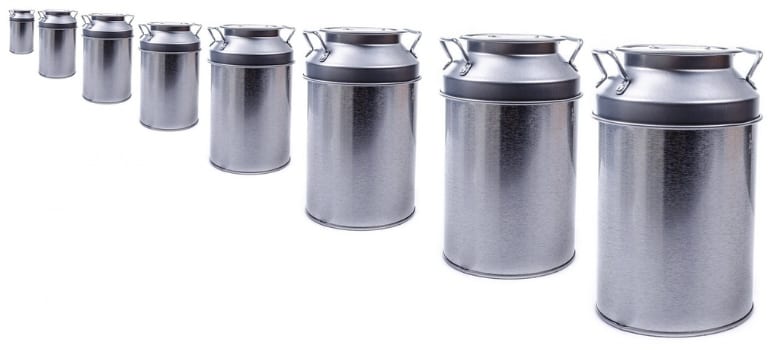
New Guidance Document for Dairy Industry on Product Sampling
SSAFE has launched a free guide that demonstrates how Industry 4.0 can be implemented across the food supply chain from farm to fork. Through a series of real-life case studies, SSAFE's guide demonstrates the potential benefits that can be created and captured across a food business through thoughtful and deliberate application of Industry 4.0 technologies. Technology across the world is advancing very rapidly, from new testing capabilities to predictive analysis through Artificial Intelligence (AI). A differentiator is knowing how, what, and where to invest to advance food safety for impact and capture the benefits from a value creation perspective. The latest guide from SSAFE explores how the food industry can collectively ensure maximum benefits are captured applying Industry 4.0 in delivering safe food everywhere.

SSAFE Releases Free Industry 4.0 Food Safety Guide
SQFI's Global Food Safety Initiative (GFSI)-benchmarked certification program is a gold standard of food safety assurance for established retail food product suppliers. However, for upstart entrepreneurs manufacturing their own product, the financial outlay for SQF food safety certification or good manufacturing practices (GMP) audits is often not a possibility and becomes a roadblock to approval with retailers. SQFI has created an affordable, remote assessment option, built on the SQF Food Safety Fundamentals criteria, which allows retailers to manage food safety risks related to local and specialty products their customers demand.
The SQF Fundamentals Verification Assessment (FVA) is an innovative approach tailored to very small suppliers who manufacture their own products, offering an affordable and efficient means of demonstrating their commitment to food safety. The SQF FVA is half-day remote assessment designed to provide early-stage small businesses with a cost-effective alternative to traditional onsite GMP or certification audits, allowing them to showcase their readiness to supply safe food products and ingredients. To ensure supplier food safety capabilities, the supplier must develop a food safety plan that identifies the product- and process-related hazards, adopt control measures, and check their operation against the SQF Fundamentals criteria through an internal audit. An expert third party evaluates the plans and the internal audit to verify accuracy and effectiveness.
SQF Launches Remote Fundamentals Verification Assessment for Very Small Suppliers
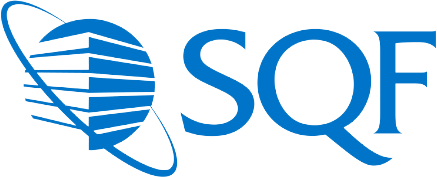

ONLINE & OF NOTE
The U.S. Food and Drug Administration (FDA) recently released a video outlining the general process for importing human foods into the U.S. The video provides basic information for importers, foreign suppliers and exporters, and customs brokers on the steps they need to take to successfully import food into the U.S. FDA must receive notification before food is offered for import into the U.S. The purpose of prior notice is to enable FDA to target inspections or examinations of the imported food at U.S. ports of entry more effectively, and to determine whether there is any credible information that the imported food shipment presents a threat or serious risk to public health.
